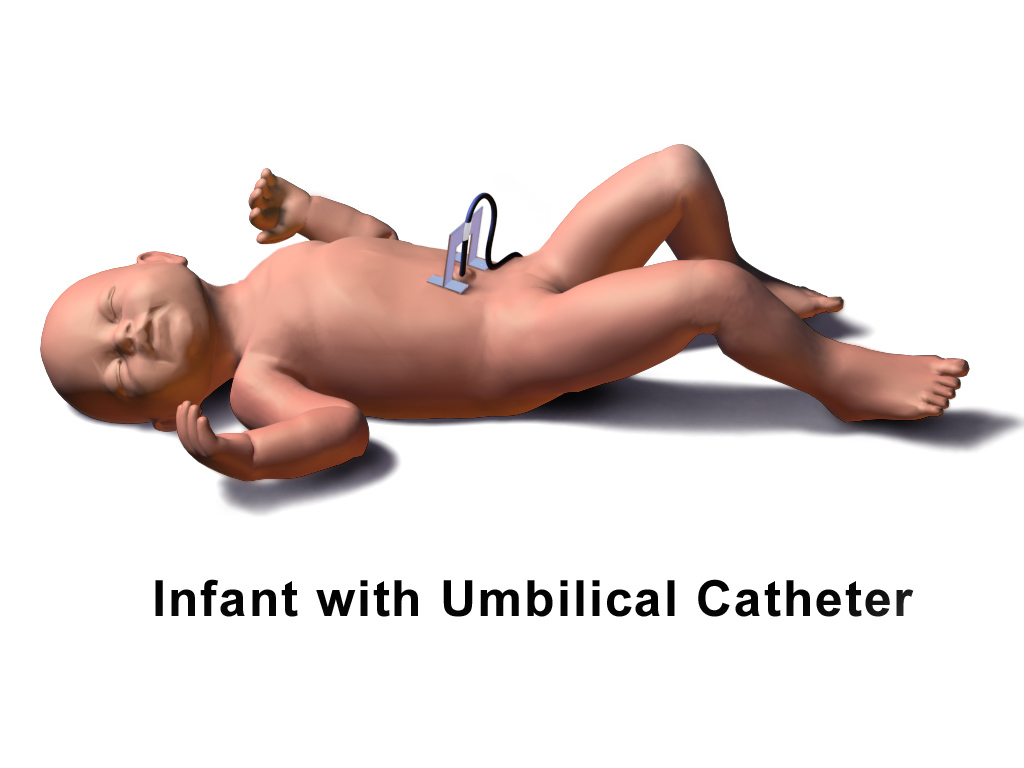[1]
Wallenstein MB, Shaw GM, Yang W, Stevenson DK. Failed umbilical artery catheterization and adverse outcomes in extremely low birth weight infants. The journal of maternal-fetal & neonatal medicine : the official journal of the European Association of Perinatal Medicine, the Federation of Asia and Oceania Perinatal Societies, the International Society of Perinatal Obstetricians. 2019 Nov:32(21):3566-3570. doi: 10.1080/14767058.2018.1468430. Epub 2018 May 2
[PubMed PMID: 29681181]
[2]
DeFreitas MJ, Mathur D, Seeherunvong W, Cano T, Katsoufis CP, Duara S, Yasin S, Zilleruelo G, Rodriguez MM, Abitbol CL. Umbilical artery histomorphometry: a link between the intrauterine environment and kidney development. Journal of developmental origins of health and disease. 2017 Jun:8(3):349-356. doi: 10.1017/S2040174417000113. Epub 2017 Mar 6
[PubMed PMID: 28260559]
[3]
Sakurai M, Donnelly LF, Klosterman LA, Strife JL. Congenital diaphragmatic hernia in neonates: variations in umbilical catheter and enteric tube position. Radiology. 2000 Jul:216(1):112-6
[PubMed PMID: 10887235]
[4]
Elser HE. Options for securing umbilical catheters. Advances in neonatal care : official journal of the National Association of Neonatal Nurses. 2013 Dec:13(6):426-9. doi: 10.1097/ANC.0000000000000038. Epub
[PubMed PMID: 24300962]
Level 3 (low-level) evidence
[5]
Barrington KJ. Umbilical artery catheters in the newborn: effects of position of the catheter tip. The Cochrane database of systematic reviews. 2000:1999(2):CD000505
[PubMed PMID: 10796375]
Level 1 (high-level) evidence
[6]
Rosenfeld W, Estrada R, Jhaveri R, Salazar D, Evans H. Evaluation of graphs for insertion of umbilical artery catheters below the diaphragm. The Journal of pediatrics. 1981 Apr:98(4):627-8
[PubMed PMID: 7205493]
[7]
Shukla H, Ferrara A. Rapid estimation of insertional length of umbilical catheters in newborns. American journal of diseases of children (1960). 1986 Aug:140(8):786-8
[PubMed PMID: 3728405]
[8]
Barrington KJ. Umbilical artery catheters in the newborn: effects of heparin. The Cochrane database of systematic reviews. 2000:1999(2):CD000507
[PubMed PMID: 10796377]
Level 1 (high-level) evidence
[9]
Ramasethu J. Complications of vascular catheters in the neonatal intensive care unit. Clinics in perinatology. 2008 Mar:35(1):199-222, x. doi: 10.1016/j.clp.2007.11.007. Epub
[PubMed PMID: 18280883]
[10]
McAdams RM, Winter VT, McCurnin DC, Coalson JJ. Complications of umbilical artery catheterization in a model of extreme prematurity. Journal of perinatology : official journal of the California Perinatal Association. 2009 Oct:29(10):685-92. doi: 10.1038/jp.2009.73. Epub 2009 Jun 25
[PubMed PMID: 19554012]
[11]
Sobczak A, Klepacka J, Amrom D, Żak I, Kruczek P, Kwinta P. Umbilical catheters as vectors for generalized bacterial infection in premature infants regardless of antibiotic use. Journal of medical microbiology. 2019 Sep:68(9):1306-1313. doi: 10.1099/jmm.0.001034. Epub 2019 Jul 5
[PubMed PMID: 31274401]
[12]
Malik M, Wilson DP. Umbilical artery catheterization: a potential cause of refractory hypoglycemia. Clinical pediatrics. 1987 Apr:26(4):181-2
[PubMed PMID: 3549107]
[13]
Elboraee MS, Toye J, Ye XY, Shah PS, Aziz K, Canadian Neonatal Network Investigators. Association between Umbilical Catheters and Neonatal Outcomes in Extremely Preterm Infants. American journal of perinatology. 2018 Feb:35(3):233-241. doi: 10.1055/s-0037-1606607. Epub 2017 Sep 14
[PubMed PMID: 28910847]
[14]
Shahid S, Dutta S, Symington A, Shivananda S, McMaster University NICU. Standardizing umbilical catheter usage in preterm infants. Pediatrics. 2014 Jun:133(6):e1742-52. doi: 10.1542/peds.2013-1373. Epub 2014 May 19
[PubMed PMID: 24843063]
[15]
Boo NY, Wong NC, Zulkifli SS, Lye MS. Risk factors associated with umbilical vascular catheter-associated thrombosis in newborn infants. Journal of paediatrics and child health. 1999 Oct:35(5):460-5
[PubMed PMID: 10571759]
[16]
O'Grady NP, Alexander M, Burns LA, Dellinger EP, Garland J, Heard SO, Lipsett PA, Masur H, Mermel LA, Pearson ML, Raad II, Randolph AG, Rupp ME, Saint S, Healthcare Infection Control Practices Advisory Committee (HICPAC) (Appendix 1). Summary of recommendations: Guidelines for the Prevention of Intravascular Catheter-related Infections. Clinical infectious diseases : an official publication of the Infectious Diseases Society of America. 2011 May:52(9):1087-99. doi: 10.1093/cid/cir138. Epub
[PubMed PMID: 21467014]
[17]
Fletcher MA, Brown DR, Landers S, Seguin J. Umbilical arterial catheter use: report of an audit conducted by the Study Group for Complications of Perinatal Care. American journal of perinatology. 1994 Mar:11(2):94-9
[PubMed PMID: 8198665]

